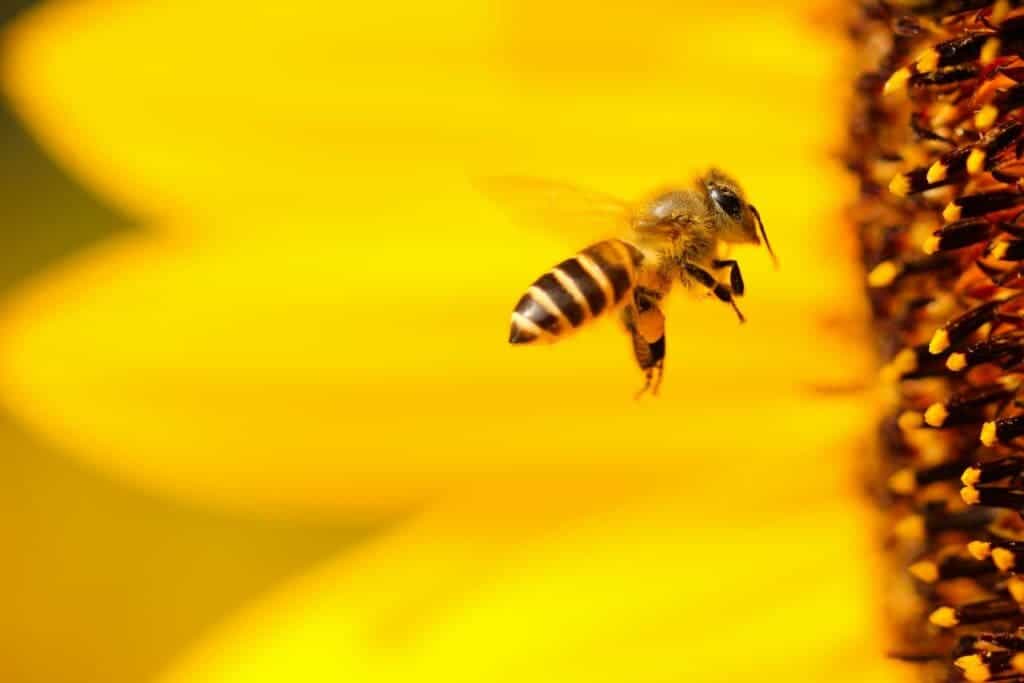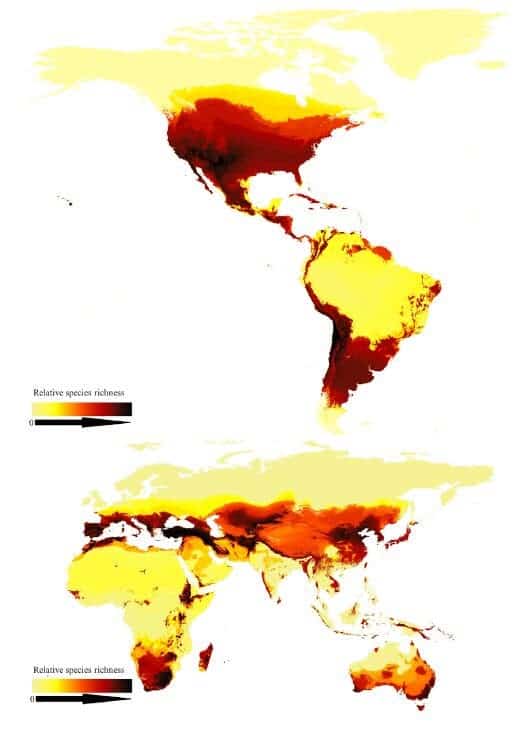The biodiversity of bees usually flies under the radar. There are 20,000 species of bees out there, spread across a wide range of habitats and climates. Researchers have now compiled the most detailed global map of bees which may be valuable for conservation efforts.

Bees are in trouble. From the pesticides we use to the natural habitats we destroy, we’re driving change that is devastating to bees.
The decline does not have only one cause, but land-use changes for agriculture or urbanization is consistently linked with bee decline. Over winter alone, the US honeybee population declined by 40%, and figures from the developed world exhibit a similar trend.
Most studies focus on honeybees as they are the closest related to our economic activity. We use them not only for honey but also to pollinate key agricultural species. Pollinators (mostly bees) provide yearly services amounting to more than 24 billion dollars to the United States economy alone — but wild pollinators also provide valuable contributions. Even when it’s not agricultural plants or plants we see near our cities, bees play a key role in virtually every ecosystem they’re in. That’s why mapping them is so important.
“People think of bees as just honey bees, bumble bees, and maybe a few others, but there are more species of bees than of birds and mammals combined,” says senior author John Ascher, an assistant professor of biological sciences at the National University of Singapore. “The United States has by far the most species of bees, but there are also vast areas of the African continent and the Middle East which have high levels of undiscovered diversity, more than in tropical areas.”
It’s the first time global bee species richness has been represented. Ascher and colleagues combed through a list of almost 6 million public records where individual bee species are mentioned in the world. The global analysis revealed hotspots of species richness, but the distribution wasn’t exactly what researchers expected.
Most species follow a latitude distribution in which diversity increases toward the tropics and decreases toward the poles. But bees follow a different distribution: more species are concentrated away from the poles and fewer near the equator, a pattern known as a bimodal latitudinal gradient. There also seem to be far fewer bee species in forests and jungles than in arid desert environments, as trees tend to provide fewer sources of food for bees than low-lying plants and flowers.

The main goal of the map is to establish a baseline level of bee populations. We can’t really know when global populations decline if we don’t know how abundant they are in the first place, and mapping geographical trends may inform conservation policy. The data can also be combined with other information to reveal patterns of what bees like and what they don’t.
Although difficult, such complexities must be accounted for to understand and map the history of bee evolution.
“Understanding insect distribution is key to evolutionary studies of origin and diversification, as well as ecological or conservation-oriented studies of how specific groups will respond to threats such as climate change or other human-induced phenomena,” the researchers note in the study. “In light of this, building and sharing our knowledge of insect distribution is one of the greatest, most important challenges that biologists and conservationists face, but the challenges of studying insects mandate the study of representative areas or specific groups.”
But while this is the most comprehensive map of bee diversity ever put together, many questions still remain. Data is scarce in many locations, and more local information can greatly improve the resolution and depth of our knowledge, the researchers note in the study.
This is particularly concerning since, in many parts of the developing world, where data tends to be most scarce, local agriculture relies on native bee species — of which far less is known. So data is missing exactly where we’d need it the most.
“I was surprised how terrible most of the prior global data really was about bee diversity,” says Alice Hughes, an associate professor of conservation biology at Xishuangbanna Tropical Botanical Garden, Chinese Academy of Sciences and another author on the paper. “A lot of the data were just too patchy or too concentrated on a small number of countries that have prioritized data sharing to be able to use these resources for any large-scale analysis.”
The team views this research as a stepping stone towards a better understanding of global bee diversity,
The authors view this research as an important first step towards a more comprehensive understanding of global bee diversity and an important baseline for future, more detailed bee research.
The study has been published in Current Biology.
Was this helpful?



